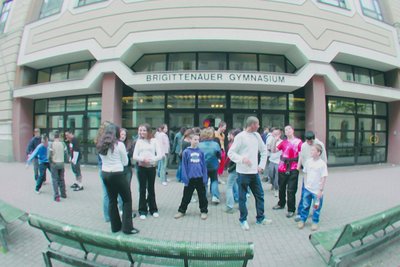Transnational Perceptions of History
“So, what does this have to do with me, anyway?” Transnational perceptions of the history of National Socialism and the Holocaust
How do people make history? How do historians and teachers communicate history? How do students and the public in general perceive history? And what role do students play in history – especially in a diverse society, increasingly influenced by immigration, without a single national historical narrative for all? The variety of different and even contradictory perceptions of history resulting from a range of traditions and experiences and mediated through transnational processes that affect young people growing up in Austria today is largely unexplored. How easy or hard is it for students to accept National Socialism and the Holocaust as integral parts of Austrian history? What is the influence of perspectives brought from abroad and experiences made outside Austria in this context? How does migration change the perception of the history of National Socialism and the Holocaust in Austrian schools and in Austrian society in general?
This project is designed to contribute to ongoing debates in historical research, education, museology, empirical social science, and migration research. Beyond that, students will be encouraged to deal with essential topics of contemporary history and engage actively and reflexively in scholarly research. New instruments and methods for dealing with National Socialism and the Holocaust in an environment of diversity and migration will be developed and implemented. The active participation of students as well as teachers at all levels of the research process is an essential and distinctive feature of the project’s approach. At the same time, the conditions for successful cooperation between science/scholarship, schools, and students in general will be evaluated.
The school becomes not only an object of research but is also turned into a place of knowledge production. The very location of the Brigittenauer Gymnasium has a historical significance due to its use as a Gestapo prison in 1938. Together with the students, interventions into the existing exhibition/memorial will be developed.
This project is already completed.
Publikation
-
In: TILL, H. (Hrsg.): Ort, Subjekt, Verbrechen. Koordinaten historisch-politischer Bildungsarbeit zum Nationalsozialismus, Czernin Verlag, Wien 2010
-
In: PAMPEL, B.: (Hrsg.), Erschrecken – Mitgefühl – Distanz. Empirische Befunde über Schülerinnen und Schüler in Gedenkstätten und zeitgeschichtlichen Ausstellungen. Leipzig, <br>S. 59–79
-
In: TILL, H. (Hrsg.): Ort, Subjekt, Verbrechen. Koordinaten historisch-politischer Bildungsarbeit zum Nationalsozialismus, Czernin Verlag, Wien 2010
-
GARNITSCHNIG, I.: Nachdenken über Nazismus und Shoah als SchülerIn in der postnazistischen Migrationsgesellschaft (Opens in new window)In: »smrt postnazismus«. Bildpunkt. Zeitschrift der IG Bildende Kunst Wien. Wien 2011
-
In: Zeitgeschichte 40 (2013) 1: Arbeitsmigration in Österreich. Historische Perspektiven und methodische Herausforderungen, S. 49-68
Tagungsbeitrag
Dissertation
-
Dissertation an der phil. Akademie der Bildenden Künste Wien 2013, Wien. (Ausgezeichnet mit dem BMWF “Award of Excellence“ für herausragende Dissertationen)

